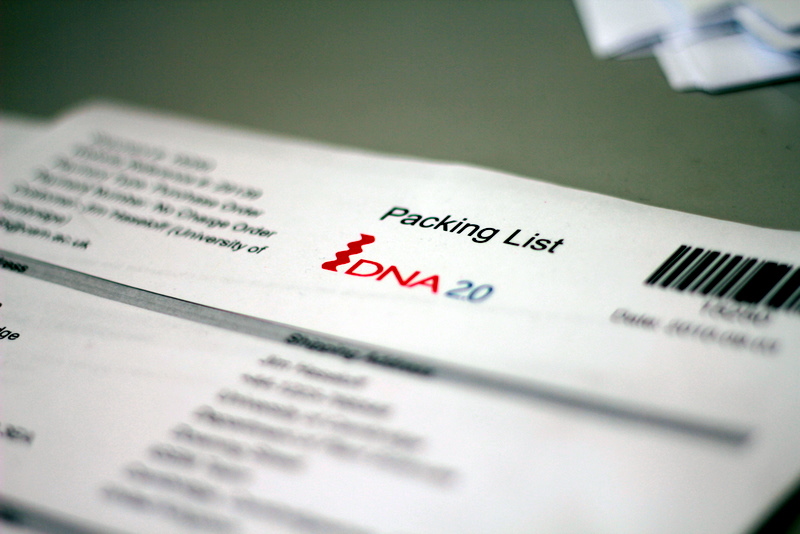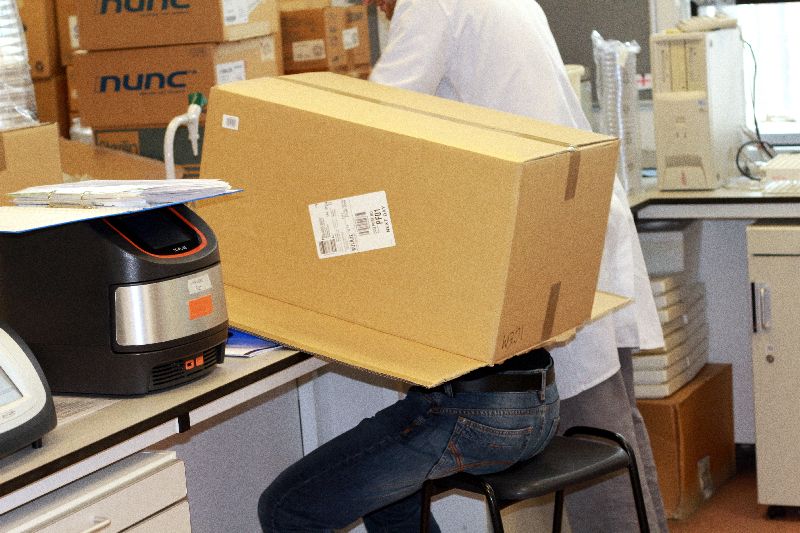Team:Cambridge/Notebook/Week9
From 2010.igem.org

Viewing project diary
View protocols and data
|
Week 9: Monday 6th - Sunday 12th September
MondayThis morning was very exciting because both our orders from DNA2.0 had arrived. These were the firefly operons, both containing both a luciferase and a luciferin regenerating enzyme. However we became incredibly paranoid, since the two tiny discs of filter paper were worth a great deal! DNA 2.0 had supplied a protocol for extraction but we wanted to OK it with our advisors first and there was no-one in the lab, so we regretfully decided to leave extraction and transformation for Tuesday. However we did see interesting results in that G28, an attempt Will had made to Gibson assemble the Vibrio fischeri lux operon into E. coli had glowed in the plate reader. Therefore Theo made up plates containing arabinose in LB with chloramphenicol and plated some out. TuesdayG28 had indeed been induced and glowed, see the pic on right - the first photograph of one of our finished BioBricks emitting light (since nothing else has been in pSB1C3). We still need to sequence it to show it is definitely correct. Today we also started a number of standard Biobrick assembly operations. We wanted to move the registry luciferase under a TetR promoter into pSB1C3 and also to add a fluorescent reporter to this operon, as well as G28. As such we performed a restriction digest, ran gels and performed gel extraction. We put this DNA in the freezer and turned our attention to our order from DNA 2.0. This was extracted from filter paper adding Tris-HCl and centrifuging. Then we transformed competent cells, we performed 4 transformations for each construct just in case, we plated them all out on kanamycin plates to select for the DNA 2.0 in house vector pJ207.
WednesdayTo our immense relief the DNA 2.0 transformations had indeed grown up! We prepared overnight cultures for BioBricking. Also Paul continued in his attempts to extract the exisiting E. coli thioesterase gene from genomic DNA for BioBricking. Unfortunately the DNA was so faint that it was best visualised by putting a cardboard box over the transilluminator. Theo ligated the fluorescent proteins onto the two operons, continuing Tuedays experiment and plated these out. ThursdayFridaySaturdaySunday
|
Week 9: Monday 6th September - Sunday 12th September
Monday86. Expt: Extract CDABEG from pJS555
87. Expt: Gibson transformation (cont. from p.70)3 colonies on one plate were not pink. These were streaked out on new Chl plated and put into liquid cultures along with 2 of the red colonies. Next check for the right sized fragment with colony PCR and try to induce with arabinose. 88. Expt: Plate Reader G28
Reads every 10 mins 89. Expt: Extracting YFP, CFP, Luc tetR, G28 via miniprep (Paul)
90. Expt: Colony PCR to extract the thioesterase gene from E. coli K12 (Paul)We used TOP10 cells, a substrain of DH10B, which is a substrain of K12. We did a colony PCR to isolate the gene:
The negative control was to check for primer/dimer and contamination. PCR protocol:
Failed: Something obtained in control... Nothing in other lanes We repeated without touchdown PCR:
Failed again: Product in negative control observed again...
Tuesday91. Expt: Further testing
Inoculation: 1ml overnight added to 3ml, Amp + Cm 92. Expt: Restriction Enzyme Digests
93. Expt: Extracting DNA 2.0 from Registry
The isolated DNA can subsequently be transformed, cut with restriction enzymes, or sequenced without further purification. Then transformed using standard protocol Result: Colonies all grew Wednesday94. Expt: Ligating restriction digests from yesterdayTheo wished to prepare three constructs:
Volumes all in µl
Theo then incubated for 5mins at 22°C and following transformation protocol, plating out on Chlor plates. 95. Expt: Colony PCR of cells transformed with the Gibson assembly product (pages 70,73) (Done by Peter)Took 2 colonies of plates ABCDE each ran PCR on G-storm ('Phusion Lng rng clny PCR') 27 cycles
final elongation 10min Ran on E-gel: faint band at ~2000bp no band visible at the expected 6.6kbp PCR tubes placed in Freezer, ~30µl left 96. Expt: Colony PCR to extract the thioesterase gene from E. coli K-12 (repeat using new protocol)We used K-12 strains from Veio collection ( JW3582 and JW5313) but during the cell lysis protcols writing on tubes was erased so we couldn't identify the 2 strains. Cell lysis
Cells were collected from plates and put in 20 of dH20 We performed 2 PCR (normal and touchdown) with 2 replicates for each strain and one negative control:
PCR
Touchdown PCR
We then ran a gel Products were obtained for strain 2 in both Touchdown lanes and in one normal PCR lane Thursday97. Expt: Restriction Digest of DNA2.0 stuff, tetR and pSB1C3 with RFPMiniprepped:
Nanodrop results: On the side of the tubes in red pen Restriction enzymes:
Ran on gel, results in lab book. Look correct. 98. Expt: PCR to add 20bp to pSB1C3 to be able to Gibson it with Thioesterase from p83PCR protocol similar to p83 but with:
It failed. 2nd attempt with annealing @ 69°C We obtained results which were then extracted from the gel by Ben. We also added pure plasmid to compare intensities.
99. Expt: Gibson assembly of fragments from p87 and p84 (pSB1C3 and Thioesterase)Readings for thioesterase extracted from expt p84 were as follows:
We performed more assembling:
We used the standard protocol (OpenWetWare). We then ran gel with Lane 10 pSB1C3 from the registry as control. We extracted the DNA samples marked in red (as the resulting plasmid should be circular so gel speed could be variable). |
 "
"


